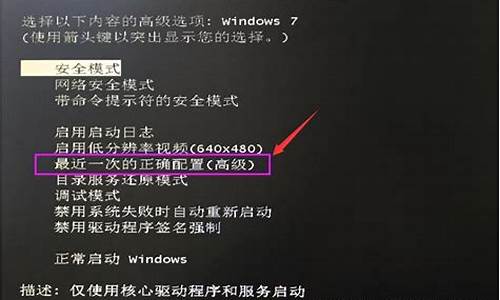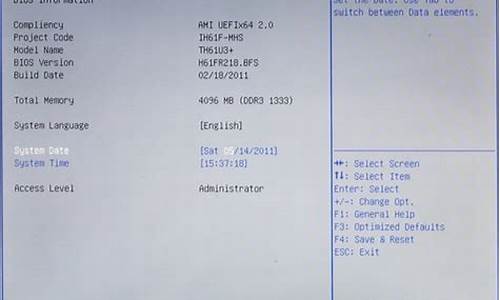您现在的位置是: 首页 > 电脑故障 电脑故障
windows performance toolkit安装_
tamoadmin 2024-08-26 人已围观
简介1.如何使用CUDA 显卡编程Compiling CUDA source file ..\..\src\caffe\layers\bnll_layer.cu...1> 1> D:\Caffe\WindowsCaffe_detect\Caffe_Windows_Detection-master\build\MSVC2013>"C:\Program Files\NVIDIA GP
1.如何使用CUDA 显卡编程

Compiling CUDA source file ..\..\src\caffe\layers\bnll_layer.cu...
1>
1> D:\Caffe\WindowsCaffe_detect\Caffe_Windows_Detection-master\build\MSVC2013>"C:\Program Files\NVIDIA GPU Computing Toolkit\CUDA\v7.5\bin\nvcc.exe" -gencode=arch=compute_20,code=\"sm_20,compute_20\" -gencode=arch=compute_35,code=\"sm_35,compute_35\" -gencode=arch=compute_52,code=\"sm_52,compute_52\" --use-local-env --cl-version 2013 -ccbin "D:\gzSoft\vs2013\VC\bin\x86_amd64" -I../../3rdparty/include -I../../src -I../../include -I"C:\Program Files\NVIDIA GPU Computing Toolkit\CUDA\v7.5\include" -I"C:\Program Files\NVIDIA GPU Computing Toolkit\CUDA\v7.5\cuda\include" -I"C:\Program Files\NVIDIA GPU Computing Toolkit\CUDA\v7.5\include" -I"C:\Program Files\NVIDIA GPU Computing Toolkit\CUDA\v7.5\include" --keep-dir x64\Debug -maxrregcount=0 --machine 64 --compile -cudart static --verbose --keep -Xcudafe "--diag_suppress=exception_spec_override_incompat --diag_suppress=useless_using_declaration --diag_suppress=field_without_dll_interface" -D_SCL_SECURE_NO_WARNINGS -DGFLS_DLL_DECL= -D_VARIADIC_MAX=10 -DWIN32 -D_DEBUG -D_CONSOLE -D_UNICODE -DUNICODE -Xcompiler "/EHsc /W1 /nologo /Od /Zi /RTC1 /MDd " -o Debug\bnll_layer.cu.obj "D:\Caffe\WindowsCaffe_detect\Caffe_Windows_Detection-master\src\caffe\layers\bnll_layer.cu"
1> #$ _SPACE_=
1> #$ _CUDART_=cudart
1> #$ _HERE_=C:\Program Files\NVIDIA GPU Computing Toolkit\CUDA\v7.5\bin
1> #$ _THERE_=C:\Program Files\NVIDIA GPU Computing Toolkit\CUDA\v7.5\bin
1> #$ _TARGET_SIZE_=
1> #$ _TARGET_DIR_=
1> #$ _TARGET_SIZE_=64
1> #$ _WIN_PLATFORM_=x64
1> #$ TOP=C:\Program Files\NVIDIA GPU Computing Toolkit\CUDA\v7.5\bin/..
1> #$ NVVMIR_LIBRARY_DIR=C:\Program Files\NVIDIA GPU Computing Toolkit\CUDA\v7.5\bin/../nvvm/libdevice
1> #$ PATH=C:\Program Files\NVIDIA GPU Computing Toolkit\CUDA\v7.5\bin/../open64/bin;C:\Program Files\NVIDIA GPU Computing Toolkit\CUDA\v7.5\bin/../nvvm/bin;C:\Program Files\NVIDIA GPU Computing Toolkit\CUDA\v7.5\bin;C:\Program Files\NVIDIA GPU Computing Toolkit\CUDA\v7.5\bin/../lib;D:\gzSoft\vs2013\VC\bin\x86_amd64;D:\gzSoft\vs2013\VC\bin;C:\Program Files (x86)\Windows Kits\8.1\bin\x86;;C:\Program Files (x86)\Microsoft SDKs\Windows\v8.1A\bin\NETFX 4.5.1 Tools;D:\gzSoft\vs2013\Common7\Tools\bin;D:\gzSoft\vs2013\Common7\tools;D:\gzSoft\vs2013\Common7\ide;C:\Program Files (x86)\HTML Help Workshop;;C:\Program Files (x86)\MSBuild\12.0\bin\;C:\Windows\Microsoft.NET\Framework\v4.0.30319\;;C:\Program Files\DahuaTech\MV Viewer\Runtime\x64\;C:\Program Files\DahuaTech\MV Viewer\Runtime\x64\GenICam_v2_4\bin\Win64_x64\;C:\Program Files\DahuaTech\MV Viewer\Runtime\Win32\;C:\Program Files\DahuaTech\MV Viewer\Runtime\Win32\GenICam_v2_4\bin\Win32_i86\;C:\Program Files\Basler\pylon 4\pylon\bin\x64;C:\Program Files\Basler\pylon 4\pylon\bin\Win32;C:\Program Files\Basler\pylon 4\genicam\Bin\Win64_x64;C:\Program Files\Basler\pylon 4\genicam\Bin\Win32_i86;C:\Windows\system32;C:\Windows;C:\Windows\System32\Wbem;C:\Windows\System32\WindowsPowerShell\v1.0\;C:\Program Files (x86)\Microsoft SQL Server\100\Tools\Binn\;C:\Program Files\Microsoft SQL Server\100\Tools\Binn\;C:\Program Files\Microsoft SQL Server\100\DTS\Binn\;C:\Program Files\Microsoft\Web Platform Installer\;C:\Program Files (x86)\Microsoft ASP.NET\ASP.NET Web Pages\v1.0\;C:\Program Files\Microsoft SQL Server\110\Tools\Binn\;D:\gzSoft\opencv2.4.11\build_Sour\vc11\bin;D:\gzSoft\opencv2.4.10\build_Sour\vc10\bin;D:\gzSoft\qt5.2.1\5.2.1\msvc2012\bin;D:\MinGW\MinGW\bin;D:\gzSoft\vs2012\VC\bin;D:\gzSoft\jaTool\jdk1.7\bin;D:\gzSoft\jaTool\jdk1.7\jre\bin;D:\gzSoft\matlab\runtime\win64;D:\gzSoft\matlab\bin;D:\gzSoft\matlab\polyspace\bin;D:\software\eslib\bin;D:\gzSoft\lualib;D:\gzSoft\halcon12\bin\x86sse2-win32;D:\gzSoft\halcon12\FLEXlm\x86sse2-win32 ;C:\Program Files (x86)\Toshiba Teli\TeliCamSDK\TeliCamApi\bin\x86;C:\Program Files (x86)\CMake\bin\;D:\Program\opencv_pro\opencv-3.3.0\opencv-3.3.0\bulid\install\x86\vc11\bin;D:\gzSoft\doxygen\bin;D:\gzSoft\python2.7.10;D:\gzSoft\python2.7.10\Scripts;C:\Program Files (x86)\Windows Kits\8.1\Windows Performance Toolkit\;C:\Program Files (x86)\Microsoft SDKs\TypeScript\1.0\;C:\Program Files\Microsoft SQL Server\120\Tools\Binn\;D:\Caffe\WindowsCaffeProject\caffe-master\Build\x64\Debug;
1> #$ INCLUDES="-IC:\Program Files\NVIDIA GPU Computing Toolkit\CUDA\v7.5\bin/../include"
1> #$ LIBRARIES= "/LIBPATH:C:\Program Files\NVIDIA GPU Computing Toolkit\CUDA\v7.5\bin/../lib/x64"
1> #$ CUDAFE_FLS=--sdk_dir "C:\Program Files (x86)\Windows Kits\8.1"
1> #$ PTXAS_FLS=
1> bnll_layer.cu
1> nvcc fatal : Failed to create the host compiler response file 'x64/Debug/bnll_layerpute_52.cpp1.ii.res'
1>C:\Program Files (x86)\MSBuild\Microsoft.Cpp\v4.0\V120\BuildCustomizations\CUDA 7.5.targets(604,9): error MSB3721: 命令“"C:\Program Files\NVIDIA GPU Computing Toolkit\CUDA\v7.5\bin\nvcc.exe" -gencode=arch=compute_20,code=\"sm_20,compute_20\" -gencode=arch=compute_35,code=\"sm_35,compute_35\" -gencode=arch=compute_52,code=\"sm_52,compute_52\" --use-local-env --cl-version 2013 -ccbin "D:\gzSoft\vs2013\VC\bin\x86_amd64" -I../../3rdparty/include -I../../src -I../../include -I"C:\Program Files\NVIDIA GPU Computing Toolkit\CUDA\v7.5\include" -I"C:\Program Files\NVIDIA GPU Computing Toolkit\CUDA\v7.5\cuda\include" -I"C:\Program Files\NVIDIA GPU Computing Toolkit\CUDA\v7.5\include" -I"C:\Program Files\NVIDIA GPU Computing Toolkit\CUDA\v7.5\include" --keep-dir x64\Debug -maxrregcount=0 --machine 64 --compile -cudart static --verbose --keep -Xcudafe "--diag_suppress=exception_spec_override_incompat --diag_suppress=useless_using_declaration --diag_suppress=field_without_dll_interface" -D_SCL_SECURE_NO_WARNINGS -DGFLS_DLL_DECL= -D_VARIADIC_MAX=10 -DWIN32 -D_DEBUG -D_CONSOLE -D_UNICODE -DUNICODE -Xcompiler "/EHsc /W1 /nologo /Od /Zi /RTC1 /MDd " -o Debug\bnll_layer.cu.obj "D:\Caffe\WindowsCaffe_detect\Caffe_Windows_Detection-master\src\caffe\layers\bnll_layer.cu"”已退出,返回代码为 1。
========== 生成: 成功 0 个,失败 1 个,最新 0 个,跳过 0 个 ==========
如何使用CUDA 显卡编程
有时候在进行地图应用开发时,可能单纯的客户端无法满足要求(如功能和性能等因素),这时就需要进行iServer的服务端开发。SuperMap iServer 6R/7c的服务端开发步骤如下:
一、在Eclipse中新建一个Dynamic Web Project
此过程截图略去
二、引用iServer所需的各类jar包
经测试后发现,必须引用iServer/WEB-INF/lib下的所有jar包,否则运行时会出现一些奇怪的错误。这些jar包所在的位置为[iServer安装目录]\webs\iserver\WEB-INF\lib。
三、将objectsja/bin目录添加到环境变量path中
如:
C:\Program Files (x86)\Common Files\NetSarang;D:\ProgramFiles\SuperMap\7_1_1\supermap_iserver_711_12128_147_win64_zip\support\objectsja\bin;D:\oracle\product\10.2.0\client_1\bin;D:\\Administrator\product\11.2.0\client_1;C:\Windows\system32;C:\Windows;C:\Windows\System32\Wbem;C:\Windows\System32\WindowsPowerShell\v1.0\;C:\Program Files (x86)\Microsoft SQL Server\100\Tools\Binn\VSShell\Common7\IDE\;C:\Program Files (x86)\Microsoft SQL Server\100\Tools\Binn\;C:\Program Files (x86)\Microsoft SQL Server\100\DTS\Binn\;%JAVA_HOME%\bin;%JRE_HOME%\bin;C:\Program Files (x86)\Cesoft\Excel Server 2013;C:\Program Files\Microsoft SQL Server\100\Tools\Binn\;C:\Program Files\Microsoft SQL Server\100\DTS\Binn\;%MVN_HOME%\bin;C:\Program Files\TortoiseSVN\bin;C:\Program Files (x86)\Intel\OpenCL SDK\2.0\bin\x86;C:\Program Files (x86)\Intel\OpenCL SDK\2.0\bin\x64;%M2_HOME%\bin;%ANT_HOME%\bin;D:\ProgramFiles\SuperMap\SMO_DotNET_711_12129_48123_64_x64_CHS_Zip\Bin;C:\Program Files\Microsoft\Web Platform Installer\;C:\Program Files (x86)\Microsoft ASP.NET\ASP.NET Web Pages\v1.0\;C:\Program Files (x86)\Windows Kits\8.0\Windows Performance Toolkit\;C:\Program Files\Microsoft SQL Server\110\Tools\Binn\;
这时还要注意path中不能有两个不同版本的ObjectsJa/bin目录,否则无法正确识别许可。
四、新建一个Ja类CBufferQuery,
五、在代码中单击邮件,选择“通过“Run As/Ja Application”运行代码
六、说明
参考iServer帮助文档中的步骤编写完代码后,运行时可能会遇到无法找到UGCMapProviderSetting类等问题,也就是无法识别任何SuperMap的类,这是因为引用的jar包不够的问题,为了避免此类问题发生,没有特殊要求的话最好把iServer/WEB-INF/lib下所有的jar包全部引用到工程里,这样就不会有很多奇怪的问题了。
第一步 先确定你的显卡 是不是N卡(控制面板 》系统》设备管理器》显示适配器)
第二步 查看你的显卡 在不在 支持的显卡 行列 s://developer.nvidia/cuda-gpus点击打开链接
第三步 安装( windows电脑中 须是 vs2008 vs2005)
CUDA Development Tools s://developer.nvidia/cuda-downloads点击打开链接
NVIDIA CUDA Getting Started Guide for Microsoft Windows
Introduction
CUDA? is a parallel computing platform and programming model invented by NVIDIA. It enables dramatic increases in computing performance by harnessing the power of the graphics processing unit (GPU).
CUDA was developed with several design goals in mind:
Provide a small set of extensions to standard programming languages, like C, that enable a straightforward implementation of parallel algorithms. With CUDA C/C++, programmers can focus on the task of parallelization of the algorithms rather than spending time on their implementation.
Support heterogeneous computation where lications use both the CPU and GPU. Serial portions of lications are run on the CPU, and parallel portions are offloaded to the GPU. As such, CUDA can be incrementally lied to existing lications. The CPU and GPU are treated as separate devices that he their own memory spaces. This configuration also allows simultaneous computation on the CPU and GPU without contention for memory resources.
CUDA-capable GPUs he hundreds of cores that can collectively run thousands of computing threads. These cores he shared resources including a register file and a shared memory. The on-chip shared memory allows parallel tasks running on these cores to share data without sending it over the system memory bus.
This guide will show you how to install and check the correct operation of the CUDA development tools.
System Requirements
To use CUDA on your system, you will need the following:
CUDA-capable GPU
Microsoft Windows XP, Vista, 7, or 8 or Windows Server 2003 or 2008
NVIDIA CUDA Toolkit (ailable at no cost from ://.nvidia/content/cuda/cuda-downloads.html)
Microsoft Visual Studio 2008 or 2010, or a corresponding version of Microsoft Visual C++ Express
About This Document
This document is intended for readers familiar with Microsoft Windows XP, Microsoft Windows Vista, or Microsoft Windows 7 operating systems and the Microsoft Visual Studio environment. You do not need previous experience with CUDA or experience with parallel computation.
Installing CUDA Development Tools
The installation of CUDA development tools on a system running the ropriate version of Windows consists of a few simple steps:
Verify the system has a CUDA-capable GPU.
Download the NVIDIA CUDA Toolkit.
Install the NVIDIA CUDA Toolkit.
Test that the installed software runs correctly and communicated with the hardware.









